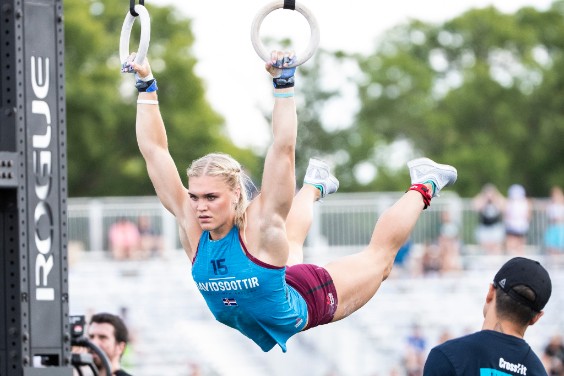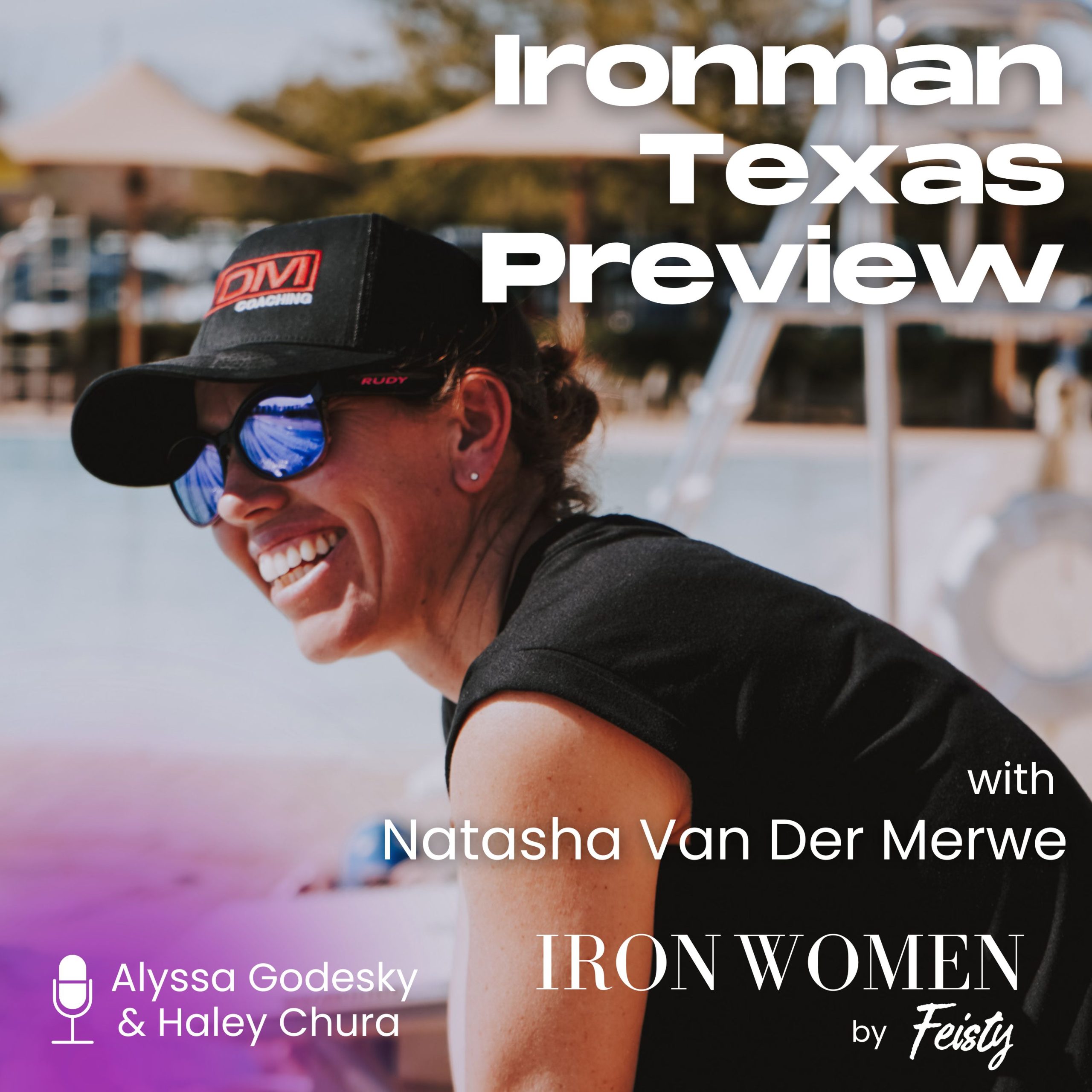August 8, 2018
Newsletter ep. 47: Who is the best athlete in the world?

If We Were Riding’ is a weekly triathlon-ish newsletter written by Kelly O’Mara and produced by Live Feisty Media. Subscribe to get it in your inbox every Wednesday morning. You can also read past issues. This episode is from August 8, 2018.
This Sunday we Swimrun. This past Sunday I practiced and it was, well, a bit of a disaster. You’ll have to listen to the podcast this Friday to find out what, uh, lesson were learned. Oh, and if you didn’t realize: The podcast is back and drops on Fridays. This week we will also discuss whether my goal of making the Crossfit Games is a bit like someone doing one triathlon and then announcing they plan to go pro and qualify for Kona as a pro. Since, anyway, other than being wildly unprepared for Swimrunning, I’m just working and waiting for inspiration.
The Best Thing on TV
If you missed the Crossfit Games this past weekend, then you missed the best four days of sports I’ve seen in years.
This photo is of third-place Katrin Davidsdottir on the first day of competition. [Photo: Courtesy of Crossfit Inc] Here she’s in the middle of 30 muscle-ups, which came after a cycling crit, but before the Crossfit Total—a sum of how much you can max total on a back squat, shoulder press and deadlift—and before the marathon 26.2-mile row. ALL ON THE FIRST DAY OF COMPETITION.
I like the Crossfit Games, but usually casually. I watch, but just on and off over the years; it’s a fascinating novelty. And I only started watching this year because I wanted to see them “race crit,” as the commentators kept referring to it. (See the video of the cycling criterium here.) If I’m honest, I mostly just thought it’d be hilarious.
And then I got hooked for four days. It was exciting; it was fun; it was well-covered and easy to follow, with stories you could care about. It was what sports are supposed to be.
Here’s what other events could learn:
– The Crossfit Games mix it up. The Games have always purported to be about flexible athleticism across a range of activities, and the first day has always included some bizarrely out-of-place endurance event. But this year it went to another level. The first day (which included the four events listed above) was nuts. The second day had an obstacle course and an event called “Chaos,” which was traditional Crossfit except the athletes didn’t know what they were supposed to do or how long each segment was when they started. They were simply told ‘do box jumps until the judge tells you to stop.’ (We, watching on TV, knew how many they had to do.) The third day had a swim-paddle-run thing and back-to-back events voted on by the spectators. The fourth day had a peg wall and a walking handstand course. It was, overall, totally insane.
– They cover the women and men with not just equal time, but equal depth and insight. Yes, everyone is attractive and wears very little clothing, but the coverage treats the women as serious legit intense athletes, not anything else. And it’s not out of some favor to the female half of the population. It’s because the women Crossfitters are as big a deal, if not a bigger deal, than the men. Sure, the biggest name in the sport is three-time winner (spoiler alert) Matt Fraser, but after that? The top women are pretty much bigger celebrities than the top men. Davidsdottir, and Sara Sigmundsdottir, who had to drop out, and Annie Thorisdottir, who was the first big celebrity of the sport and has competed since 2009! And, of course, Tia-Clair Toomey, who won her second title in dominating fashion and whose post-win interview was hilarious in its succinct brevity. (Interviewer: Super long question about how she barely won last year and what’s changed in the last 365 days to make her dominant? Toomey: “Just hard work and dedication.” *end of discussion*)
– They build drama and involve the fans. The director of the Crossfit Games, Dave Castro, makes a very concerted effort to build suspense and drama, to mix up the types of events and the pacing, to think of fans and how things will play out for the athletes. He even had fans vote on the order of two events.
– And they back it up with $$$. Do you know how much the winner gets? $300,000. 20th place? $7,000. An event win (there are around 12-13 events over the four days) is another $3,000. Do you know how much 11th place gets at the Ironman World Championships? ZERO DOLLARS. When you put your money behind your big claims, people show up and TV shows up and advertising dollars show up.
The only downside is that Crossfit the Company makes it hard to like—what with giving the winners guns and the weird anti-gay stuff and some of the cult-like tendencies and moderately high injury risk. I understand why people get a vibe. But, it’s still incredibly young as a sport. (Seriously, watch video from the 2009 Games and the women are lifting basically what I lift. Progression has happened rapidly.) As it matures, it’s been sorting itself out. Maybe it’ll sort itself out completely into something we all can get fully behind.
Who is the fittest in the world?
For decades and decades, the decathlete was generally considered the fittest athlete on the planet. At least, from the male side. (The heptathlon never had quite the same appeal—which of course gets into the whole discussion of why women are limited to shorter and fewer events, if women have to do the same thing men do to achieve legitimacy, why don’t men do what we do instead.) Then, in recent years, there came a wash of new events to determine the fittest: world’s strongest man, Ironman, ultra races. Who was the best athlete?
I thought about this question again when I (randomly) ended up watching Tough Mudder X on TV—a kind of obstacle course mile run. (No, you can’t do one. There seems to be no record of any future races.) The announcers kept claiming this new event would determine who was really the fittest. I don’t know if that’s true, but a teacher from Kentucky won $25,000, so.
Crossfit makes a lot of statements too about determining who is truly the fittest in the world. And, honestly, with the breadth of events the athletes had to cover during the Crossfit Games—swim, paddle, bike, American Ninja Warrior-style climbing, heaving Olympic lifting, obstacle courses, gymnastics, functional high-intensity strength—I’m willing to consider agreeing. Though, of course, Crossfit still disproportionately weights strength over endurance (not that four days of competition isn’t endurance).
If you could create a contest to determine who was the fittest, what would it be?
Death before DNF
I saw that on a t-shirt one time: “Death before DNF.” And it seems sort of obvious to point out that’s insane, but I’m still going to point it out.
Lucy Gossage, Ironman champ, wrote a very heartfelt and worthwhile piece about why she doesn’t DNF (with the exception of serious illness or injury). Her points are all totally valid: respect the race, respect the athletes—both those beating you and those behind you, respect your training. She’s right there’s nothing more bullshit annoying than when half the field you’re beating decides to drop out because “it just wasn’t their day.” Cool, guys, thanks, makes me feel good about myself. Be gracious.
But I also think there’s a legitimate consideration about when we still cross the finish line, but in reality we’ve already quit. Maybe this is only me and only a problem I struggle with. But I find that sometimes the real “DNF” has already happened out there on course and I’m just jogging it in. Does that still count?
- As always, there were many, many races this weekend: Many-time world champ Daniela Ryf set a world-best 70.3 time (3:57:55!!) in Poland. Perennial oddity Norseman took people all the way across Norway with a new women’s course record in the process. Major League Tri hosted not just its usual team relay, but also an individual sprint race. And, of course, there were Ironman Ironman Ironman events, with Boulder 70.3 causing a bit of a Slowtwitch kerfuffle over what constitutes outside assistance. (For the record: I agree spectator enthusiasm should be encouraged and I don’t have a problem with onlookers biking behind the runners, but I do have a problem with rules being applied unevenly…)
- Lionel Sanders became the latest triathlete to launch a YouTube channel—to which my husband said, “Who is Lionel Sanders?” and “It seems like they should all just share one channel.” So that’s where triathlon is at.
- USA Triathlon launched its own referral program. You refer a new member, you get $5 off your membership.
- The hive mind started speculating wildly after Olympian and newly-minted Ironman contender Sarah True tweeted, “When a seasoned pro athlete makes a significant performance jump in a short period of time, it’s normal to ask questions.” After people kept guessing what she meant by that, she admitted the skepticism was prompted not by triathlon but by the Beach to Beacon 10K this past weekend.
- Trek announced two-time Olympian Ina-Yoko Teutenberg is coming out of retirement to lead a new women’s team.
- Women will also finally get to compete in the iconic surfing contest Mavericks sometime soon and these photos of them prepping are fantastic. Though it’s not really accurate to tout 2019 as the first year for women, since that would have happened before now but the contest didn’t get called in 2017 or 2018. (Way way more background here.)
- I don’t know if we needed a bunch of really intense interactive maps to show what we could have guessed about the age at which women have their first kid, but it’s still an illuminating deep dive.
- In a follow-up to last week’s talk about wellness, stop worshiping the false idols.
- And, since we’re basically the all-tick-related-news newsletter: This weird tick-borne meat allergy is freaking me out.
- I’m not sure the unit on this map is small enough to be productive, but it’s still interesting to see how America uses its land.
- Relatedly: We almost beat climate change in the 1980s. But then we didn’t.
- A follow-up to running across the country? Running every street and block in San Francisco. (The real challenge would be to pick a bigger city…)
- The basketball court on the top of the Supreme Court.
Subscribe to the ‘If We Were Riding’ podcast: Stitcher | iTunes | Soundcloud


 Outspoken Women in Triathlon Summit Returns Bigger than Ever
Outspoken Women in Triathlon Summit Returns Bigger than Ever  Driving the Lamborghini: Productivity and the Power of Paper
Driving the Lamborghini: Productivity and the Power of Paper  5 take aways from the Compete Sports Diversity Summit
5 take aways from the Compete Sports Diversity Summit  Simple Tips to Hone Your Bike Handling Skills
Simple Tips to Hone Your Bike Handling Skills 


